Wet wipes are the scourge of the sewer system. Is the solution clearer messaging deterring shoppers from flushing them, or a ban on wipes containing plastic?
Wet wipes are the scourge of the sewer system. Is the solution clearer messaging deterring shoppers from flushing them, or a ban on wipes containing plastic?
Wet Wipe Island in the River Thames no longer has its own Google Maps entry. Three weeks of painstaking work was required to remove the five million wet wipes that had formed into a 250-metre-long island near Hammersmith Bridge. But now, thanks to the Port of London Authority, in collaboration with Thames Water and environmental charity Thames21, both the island and its Maps entry are no more.
It should not be a cause for celebration, however. “This ‘island’ was a direct result of people flushing away wet wipes containing plastic,” says John Sullivan, Thames Water’s head of tideway integration group, “and shows the damage caused by putting the wrong things down your toilet.”
In fact those five million wipes are a drop in the ocean. Thames Water removes 3.8 billion wipes from its network each year, while almost one in five UK adults admit to putting wet wipes down the loo, according to trade association Water UK. With Kantar estimating that over 580 million packs of wet wipes are sold into the UK consumer market each year, CEO of Thames21 Chris Coode says the charity wants “producers to get serious about plastic-free alternatives to wet wipes”.
So, are wet wipe suppliers and retailers doing enough? Is consumer messaging clear enough? Are any wet wipes genuinely fit to flush? Or is a total ban the only hope?
According to Water UK, 75% of the nation’s 300,000 drain blockages a year are caused by people flushing wet wipes, which are also a “major cause of pollution in our seas and rivers”. In February 2023, it launched its ‘Bin the Wipe’ campaign to raise awareness of the issues caused by flushing wet wipes.
This followed a 2021 government consultation on banning wet wipes containing plastic, which 96% of people supported. Three years later, in April 2024, the Conservative government confirmed the ban and published draft regulations, though the plans have stalled following the general election. Meanwhile, the devolved nations have not acted at the same time, with Wales the only nation to have confirmed a ban, which will come into force from December 2026. Given the hold-ups, Thames21 has been calling for the current UK government to “urgently” revisit the ban.
Many of the category’s main players have been getting out in front of the legislation, which is widely expected to become law. Sainsbury’s and Tesco both refused The Grocer’s offer of an interview but pointed out they no longer sell wet wipes containing plastic. Procter & Gamble, which makes Pampers, also declined an interview, as did Kimberly-Clark, which produces Andrex and Huggies, though it did point out that its Hygiene Wipes have met “international flushable standards” for more than a decade.
Nice-Pak International has two UK factories and produces wet wipes on behalf of large retailers. It says 92% of its private-label wipes sold in the UK & Europe were plastic-free in 2024 and that most UK retailers have already made the switch across their own-label ranges.
“Thanks to the collaboration of our suppliers and retail partners, we’ve helped drive large-scale change. We took action well before legislation demanded it,” says Michael Docker, Nice-Pak’s MD.
Trade body Edana, which represents wet wipe manufacturers like Kimberly-Clark and P&G, describes the move to plastic-free consumer wet wipes as the industry’s “biggest innovation” in recent years. And its public affairs director, Brieuc Lits, points out this “required significant investment in plant and in R&D”.
The move to plastic-free wipes, however, could have unintended consequences, with Nice-Pak admitting it might lead to “confusion” over whether they can be flushed. This becomes more urgent given most brands also sell wipes – often referred to as moist toilet tissue – that are marked as “flushable”. This usually means they’re made from cellulosic fibres and conform to Edana GD4, the industry standard for flushable wipes.
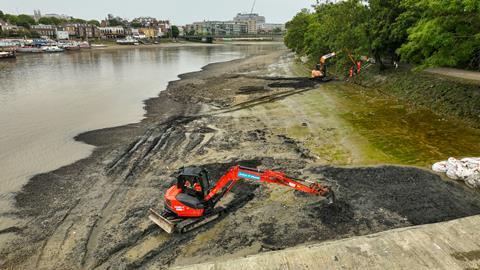
But this is where the problems – and the disagreements – really begin.
“Technically, when a wet wipe company says its product is biodegradable and flushable, they’re not actually lying,” says Randa Kachef, an urban waste and sustainability expert at Birkbeck, University of London. “But they’re also not being transparent or responsible in their messaging.”
Disdain for the environment?
She points out that wipes are flushable in the same sense that someone could flush a small, dead animal – but that doesn’t mean they should. “It’s when it’s in the drain systems that we get blockages and environmental contamination. So, are the companies doing enough? No, because they’re only thinking about their end sales and about the life of their product until it gets to the home. They’re not thinking beyond that.”
The same goes for wet wipes labelled “biodegradable” or “compostable” – very common on wet wipe packaging in the supermarkets, along with bold wording like “99% water” or “plant-based” and small symbols of hands holding the earth (see boxes).
“Even if a product is technically biodegradable, that doesn’t mean it’s good for the environment,” says Kachef. “Dog poo is biodegradable, but you don’t just leave it there. And if you toss a banana peel on the street it doesn’t just disappear. I don’t think any company cares about the environment, because caring about the environment is not profitable. It’s great we’ll have plastic-free wet wipes, but [the plastic] is only one component of what makes them environmentally unfriendly.”
The industry insists it’s committed to ‘correct disposal’, with Lits pointing out Edana has worked with its members to design a code of “voluntary good practices” that is now “widely implemented”. And Nice-Pak points out that most wipes “not designed to be flushed” display a ‘do not flush’ symbol on their packaging – an industry initiative developed alongside the water industry aimed at educating consumers.
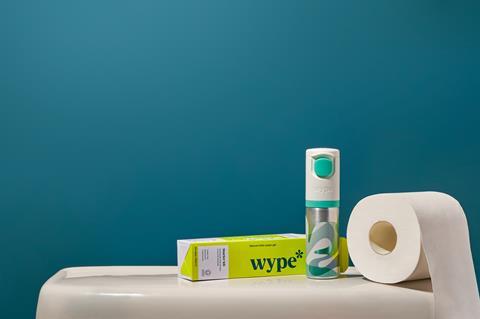
There is another way, however. Wype, a Grocer Gold-nominated wet wipe alternative, cuts out the wipe, using instead a gel that is added to ordinary toilet paper. It’s listed in Boots, Holland & Barrett and DTC “with more major retail partnerships on the horizon”, promises Wype co-founder Giorgia Granata.
But vested interests mean the differences between biodegradable, compostable and flushable isn’t made sufficiently clear to consumers. “Biodegradation happens under very specific conditions. I think it’d be interesting to see more of that info [on packaging]: what conditions does this happen under? And how long would it take? Unfortunately, wet wipes are a hugely lucrative single-use product, so they just find ways to market them that customers will find acceptable,” says Granata.
Until quite recently, the UK did have a ‘Fine to Flush’ certification for wet wipes, though it was quashed in March 2024 when Thérèse Coffey, then environment secretary, told wipe manufacturers the scheme and its labelling was causing confusion for consumers.
It seems a sound observation. Especially when Water UK says the most popular reason given by people who flush wet wipes is “the belief that it’s safe”.
Does it not follow, then, that consumers confused by ‘Fine to Flush’ are likely to be just as confused now certain types of wipes are branded as ‘flushable’?
Lits points out that Edana’s members were “strong supporters” of Fine to Flush because of its “sound technical basis” and “ability to help consumers understand which products are truly flushable”. But Liz Gyekye, communications manager at Thames21, thinks the only real answer is for all wet wipes to go in the bin.
Kachef agrees, saying no materials with “a more robust structure than traditional toilet roll” should go into the toilet. This is because even the natural polymers, such as cellulose, that wet wipe brands like to trumpet as part of their flushable solution are hydrophobic, meaning they repel water and thus “don’t lose their strength in water the way toilet roll does”.
Biodegradation “requires a healthy exposure to air”, she adds, which works best in temperatures circa 30°C – not conditions that wet wipes get in sewer pipes or British rivers – and points to a 2023 paper by scientists at Cardiff University, who concluded that “ most flushed biodegradable wet wipes do not really degrade”.
“Most wet wipes are made of cellulose fibres that are cotton or wood-based. And when that biodegrades in water, it changes the balance of certain nutrients in the water. That causes an increase in aquatic flora – algae and similar – which takes oxygen out of water and fish suffocate. So, even if you create a wet wipe that does disappear, it’s going to have another impact down the line. The only solution is to bin them,” says Kachef.
There are situations, though, where everyone agrees wet wipes are OK: in healthcare and for parents.
“I’ve never suggested to a parent they stop using wet wipes because the response is violent,” laughs Granata. “But limiting them in other categories is a valid idea. Household cleaning wipes are irrational – you don’t need them. And make-up wipes – you don’t need them unless you’re washing your face on Kilimanjaro. Definitely some categories could be discouraged.”
Kachef also welcomes the move to plastic-free wipes, and accepts “these kinds of things take time”, but she ultimately sees behaviour change as the answer.
“I don’t think removing plastics from wet wipes is enough,” she says. “It needs to be about having wet wipe companies put out much better messaging.
“If people started to understand that flushing wet wipes impacts their access to fresh water, contaminates rivers, and increases flood risk… once we start connecting those impacts to the actual behaviour in the home, that’s when people start to take notice.”
Wet wipe packaging compared
The Grocer asked brand strategist Russell Holmes, who has created brands across the beauty, fmcg and fast-casual dining sectors, to compare wet wipes in terms of their approach to sustainability policy, messaging and clarity
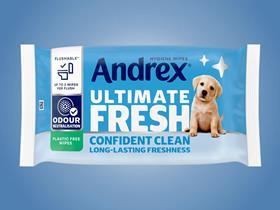
Andrex
These are the only wipes designated ‘flushable’ on our list – that’s because Andrex only offers flushable wipes. It says consumers can flush two at a time. And the difference is really obvious when ‘flush-ability’ is communicated as a product benefit. The message is loud and clear, with real emphasis and care taken to carefully position it so a customer clearly sees it.
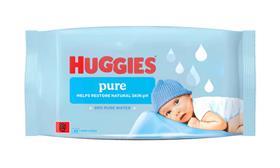
Huggies
On this surprisingly minimal pack, the non-flushable message really pops. There is a red symbol bottom-left that indicates these Huggies wipes should not be flushed – and I feel like it really draws the eye. The fact this is the only symbol on the front and that they’ve chosen red for impact suggests a commitment to getting the message across. A great example.
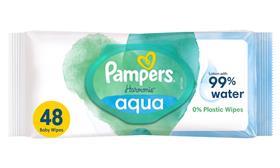
Pampers
This is the only brand that does not mention flushing, let alone offer a ‘do not flush’ logo – and it’s not an outlier: none of the Pampers wipes we saw had one. By not clearly stating how to dispose of a product, the decision is left to the customer. Packaging that declares “plastic free” and “99% water” (like most products here) will undoubtedly lead to confusion.
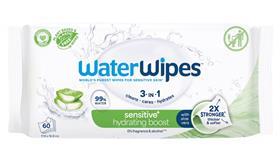
Waterwipes
There are many different messages competing for eyeballs, from “99% water” to “plant based and plastic free”. When there’s a lot to read, some details are more likely to get overlooked. There’s also a picture of a leaf and even one of some aloe vera. The no-flush symbol is a good size – I’m sure it’ll be seen. I’d like to see the descriptor alongside just to reinforce the message.
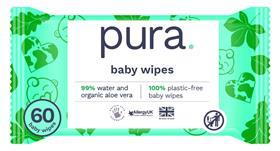
Pura
The placement of the no-flush symbol on the bottom-right of the central messaging feels like a last-minute design decision, but it’s bold and shouldn’t be missed by consumers. The entire look of this packaging appears very ‘earth-friendly’ with its leaves and hearts – perhaps there’s an opportunity to integrate a message about why not flushing is better for the planet?
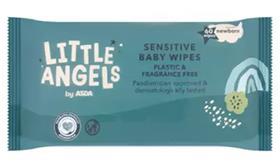
Asda
The position of the non-flush symbol is OK, although its size and the choice of dark blue on a blue background makes it appear far less important than its larger “dermatologically certified” neighbour. It feels like this is an inconvenient message that needs to be communicated; an approach that’s typical across almost all of the examples here.
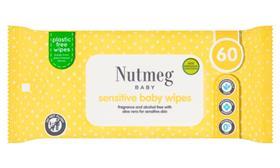
Morrisons
I like this approach. The “Do Not Flush” wording couldn’t be clearer, and the symbol is well positioned and sized. Again, there’s a large statement about being plastic-free and plant-based on that green tab top-left, along with a picture of a plant on the right. But overall, I would say consumers are left in no doubt where these wipes should end up. A good solution.
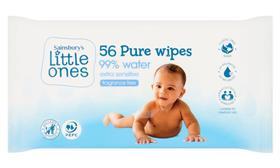
Sainsbury’s
“Bag it & Bin It. Don’t Flush It” is the clearest wording found on any of the packs we’ve looked at. I’d have liked this symbol sat alone for maximum prominence – it is just one message out of five, after all – but this is a good example. While surrounded by messages such as “plastic-free” and “99% water”, I do feel the strong wording emphasising not to flush clarifies doubts.
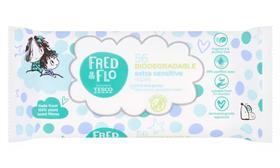
Tesco
I initially missed the non-flushable symbol here, as the pack is visually busy and it’s reproduced in a very light colour. Another brand with multiple positive messages – “99% purified water”, “100% plant-based fibres” – suggesting these aren’t necessarily bad for the environment. Could the disposal message be tied to these positives: “Plant based, but please don’t flush”?
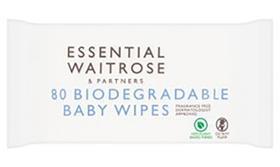
Waitrose
Pragmatic and to the point, this is the only pack here that does not cram in nods to nature, water or feature cartoon characters. With such a minimal design and copy to back up the no-flush symbol, this is as obvious as it gets. The packaging is not strewn with confusing and overly positive messaging, which helps draw the eye to the all-important no-flushing symbol.
Green Week features are sponsored by EcoVend



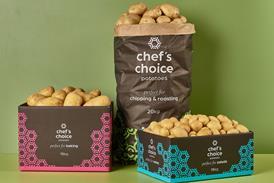
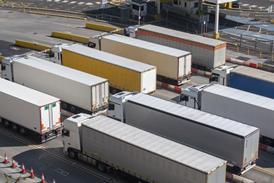


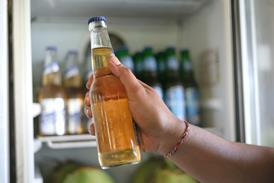
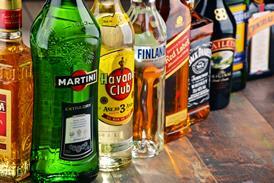
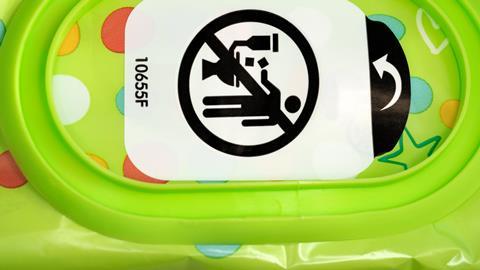

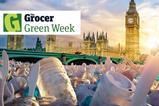
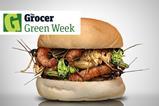
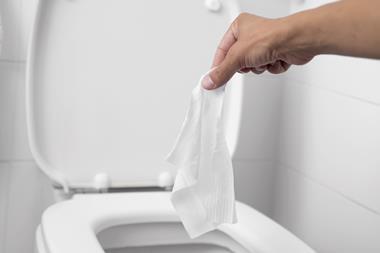
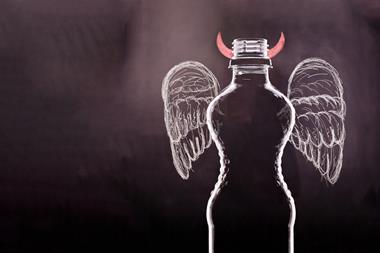
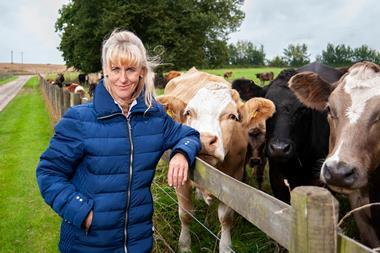


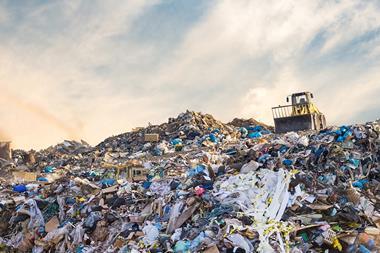


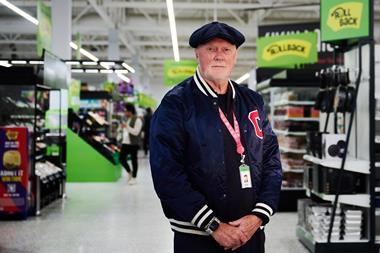


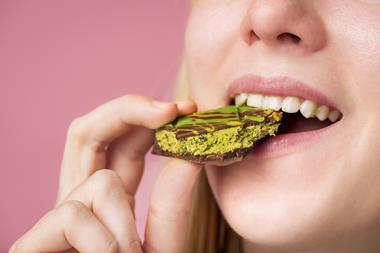
No comments yet